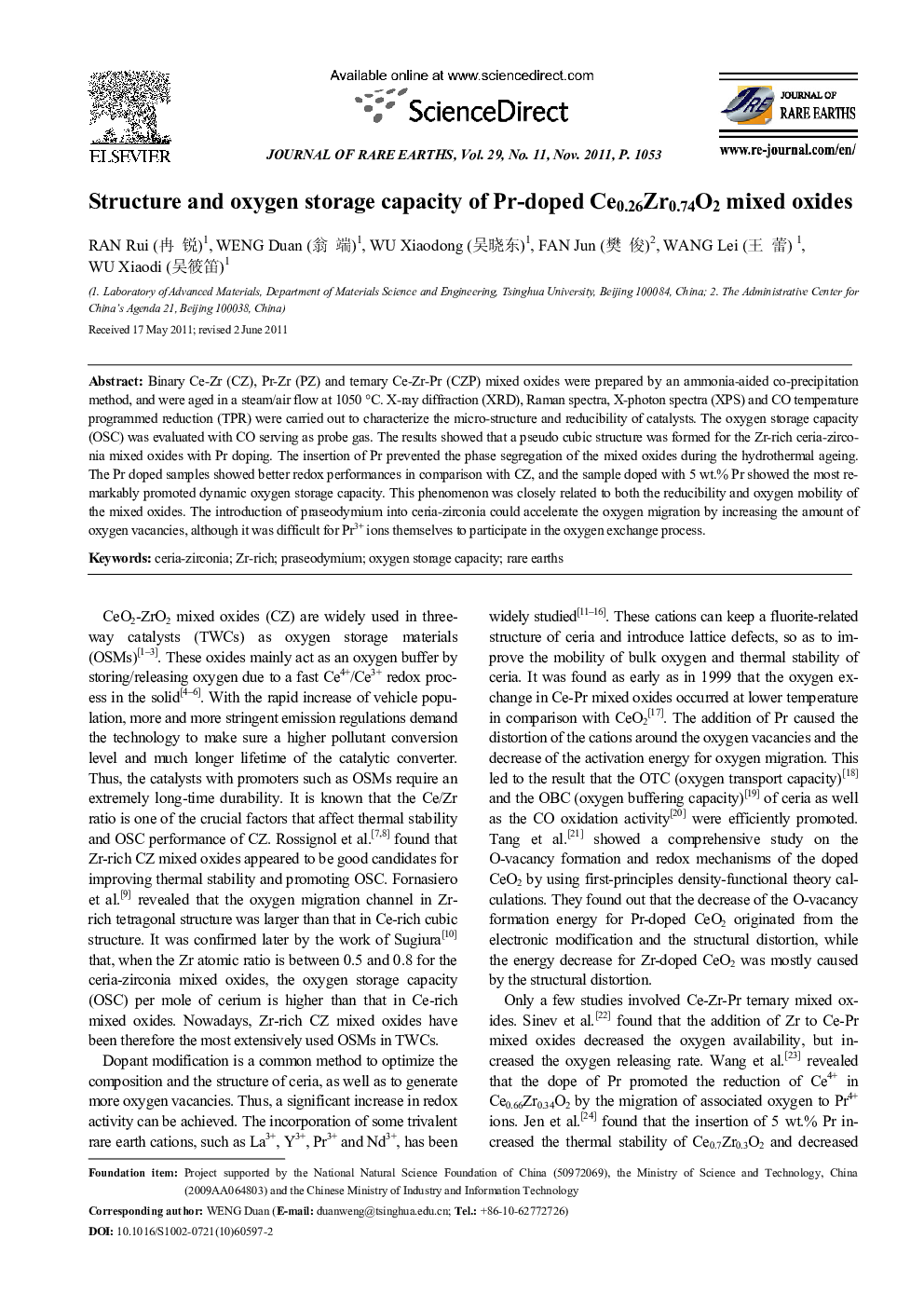| Article ID | Journal | Published Year | Pages | File Type |
|---|---|---|---|---|
| 1262443 | Journal of Rare Earths | 2011 | 7 Pages |
Binary Ce-Zr (CZ), Pr-Zr (PZ) and ternary Ce-Zr-Pr (CZP) mixed oxides were prepared by an ammonia-aided co-precipitation method, and were aged in a steam/air flow at 1050 °C. X-ray diffraction (XRD), Raman spectra, X-photon spectra (XPS) and CO temperature programmed reduction (TPR) were carried out to characterize the micro-structure and reducibility of catalysts. The oxygen storage capacity (OSC) was evaluated with CO serving as probe gas. The results showed that a pseudo cubic structure was formed for the Zr-rich ceria-zirconia mixed oxides with Pr doping. The insertion of Pr prevented the phase segregation of the mixed oxides during the hydrothermal ageing. The Pr doped samples showed better redox performances in comparison with CZ, and the sample doped with 5 wt.% Pr showed the most remarkably promoted dynamic oxygen storage capacity. This phenomenon was closely related to both the reducibility and oxygen mobility of the mixed oxides. The introduction of praseodymium into ceria-zirconia could accelerate the oxygen migration by increasing the amount of oxygen vacancies, although it was difficult for Pr3+ ions themselves to participate in the oxygen exchange process.
